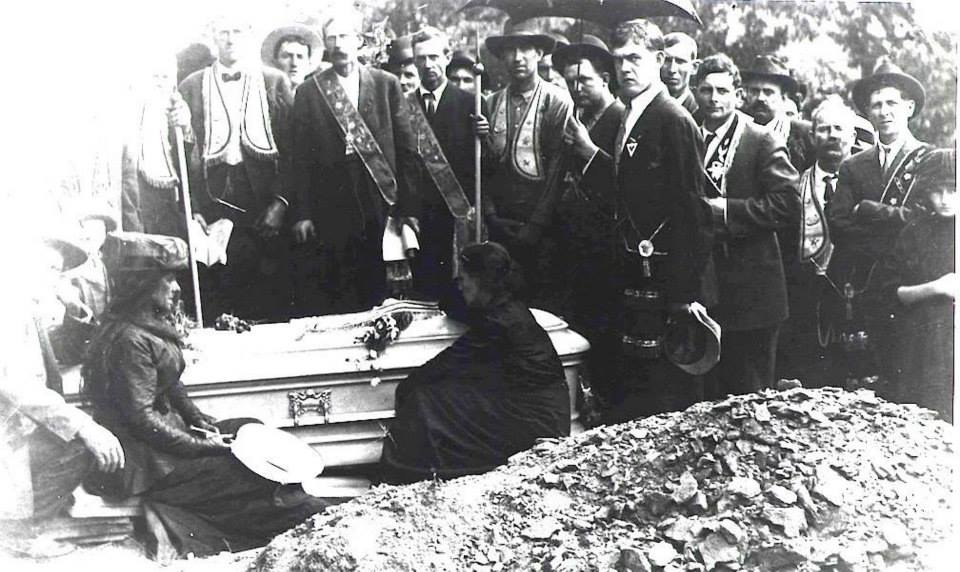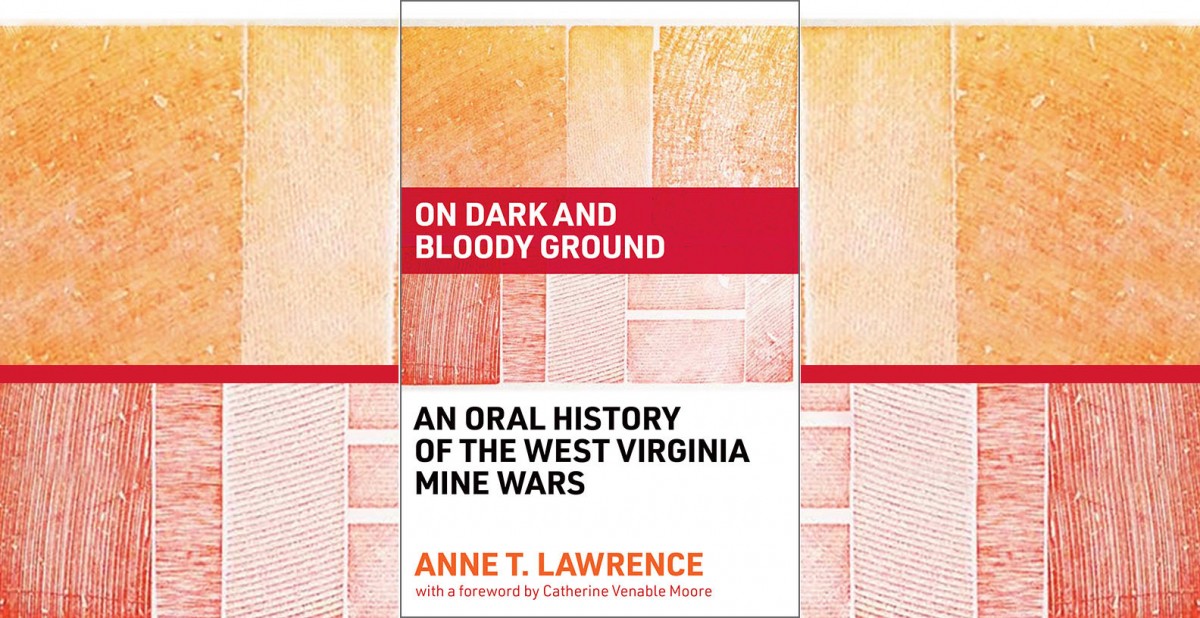William Greer died on August 28, 1921. He had been a coal miner living at the Stone Mountain Coal Camp in Mingo County, West Virginia.
On May 19, 1920, Baldwin-Felts Detectives evicted Greer and his family because he had joined the United Mine Workers Union. Most of the detectives who carried out those evictions died later that day in a shootout with Police Chief Sid Hatfield and his deputies in Matewan.
We have no records of it, but William Greer and Sid Hatfield must have known one another. In small town West Virginia then much like today, everyone knows everyone.
After their eviction, Greer and his family spent the next 14 months living in the Lick Creek Tent Colony. In the winter of 1921, the colony lost around a dozen children to disease. Greer probably knew their names.
When Baldwin-Felts Detectives murdered Sid Hatfield in August of 1921 on the steps of the McDowell County Courthouse, it is reasonable to assume that Greer attended the funeral. He probably stood there in the rain like the thousands of other onlookers as they carried the casket over the Tug River.

Twenty-four days later, Greer found himself in Sharples, Logan County, with a rifle in his hand. State Troopers, sent by Logan County Sheriff Don Chafin, were taking prisoners in Sharples. Greer and other armed miners attempted to thwart the troopers and confronted them in the street. A gunfight ensued and a state trooper shot Greer through the chest. He died instantly.
William’s family eviction helped spark the Battle of Matewan; his death helped spark the Battle of Blair Mountain.
Eli Kemp died on August 31, 1921. That morning, before the fog had lifted, Eli embarked from his camp with an advance scouting guard. Kemp made his way with the others up White’s Trace Branch at the foot of Blair Mountain. As the scouts ascended, they encountered three Logan County Deputies, including John Gore, Don Chafin’s right hand man. Both groups asked for a password and, when both answered with the wrong one, gunshots rang out. Within seconds, two of the deputies were dead. John Gore was shot and on the ground, but managed to get a round off and hit Kemp.
James Wilburn, a preacher who had lived in Blair for many years and undoubtedly knew Gore, walked up to up as he lay on the forest floor. Then Wilburn, who only the day before had said it was time to “lay down my Bible and pick up my rifle,” shot Gore in the head. Wilburn then helped carry Eli over a mile through the woods back into Blair. They managed to carry Eli to the doctor’s office, but he died shortly after they laid him on a table.
Eli Kemp was a Black man and the first miner to die on Blair Mountain.
It is amazing how little we know about the Battle of Blair Mountain. We don’t know how many participated in the uprising, though 10,000 is the standard number used. We don’t know how many died.
We know very little about William Greer, and we know even less about Eli Kemp – there are no known pictures of either. We have no idea where Kemp was from, whether events such as the recent Tulsa Massacre entered his mind, or whether his own experiences led him to Blair Mountain. What we do know is that Eli Kemp was on the front line of the fight and he was there of his own free will.
We know of other Black miners who assumed leadership roles in the battle, although their stories remain obscure. “Red” Thompson and Charlie “Popcorn” Gordon were two Black miners who led squads into combat at Blair Mountain. Red, from Opperman, wore a broad-brimmed white hat, red bandana, and led an assault of 75 men up the Blair Gap. After the battle, these men seemed to have disappeared, taking their stories with them.
Many other participants in the Battle of Blair Mountain lived through the fight, but are forgotten just the same. Men such as Early Ball, a schoolteacher who joined the fighting. He was a World War I veteran who had taken up arms and travelled to France to make the world safe for democracy only to come home, take up arms, and travel to Blair Mountain to make America safe for democracy.
Still others participated without firing a shot. W.F. Harliss, a doctor from Clothier, made daily trips up Hewitt Creek, braving the machine gun fire to treat wounded miners on the hillsides. Dr. Harliss took some of the wounded to makeshift hospitals located in schoolhouses or tents.
Miners’ wives served as nurses and cooks, tending the wounded and making meals, but we don’t even know any of their names.
There are no monuments to Eli Kemp or William Greer. No markers. No T-Shirts. No inspirational quotes to go on meme. There is no street named after Red Thompson, though one can find streets named for coal operators. There is no big budget Hollywood film to immortalize Popcorn Gordon or Early Ball. No hospital named after Dr. Harliss.
While the story of the Mine Wars has finally emerged in the American popular consciousness, we cannot forget that iron gates from absentee landowners still bar access to the battlefield and the names of most of the participants are either forgotten or will never be known.
I often wonder how many Blair Mountains exist in human history. Did workers who built pyramids in Egypt ever revolt? Did Mayan kings ever suppress working class rebellions? We don’t know, because workers did not write the history. Those who wish to control the present try to monopolize their interpretation of the past. Such has been the case with the West Virginia Mine Wars.

Over the last decade, we have made progress. The group Friends of Blair Mountain spearheaded an effort to save the battlefield from destruction. Grassroots scholars, community members and union miners created a museum dedicated to the history. Such efforts are means of reclaiming our story from those who wish to control us and tell us who we are.
So, in the midst of the Blair Centennial, as many folks read about the meaning of the battle, its lessons of solidarity, social justice, regional identity, and the labor movement, I encourage you to pause and simply reflect upon those few whose stories have survived. If nothing else, remember their names. As long as their names live, so does the history.
Charles B. Keeney is an associate professor of history at Southern West Virginia Community and Technical College. The author of two books, he served as president of Friends of Blair Mountain and was a founding member of the West Virginia Mine Wars Museum. His latest book “The Road to Blair Mountain” is available from West Virginia University Press.



